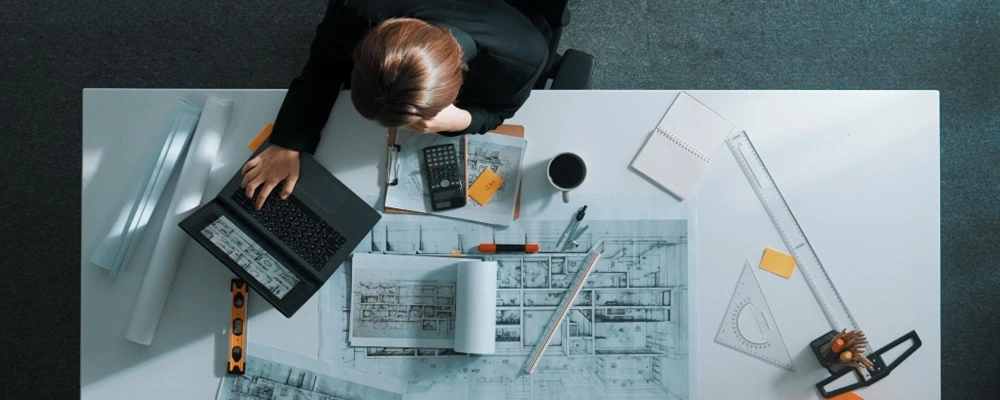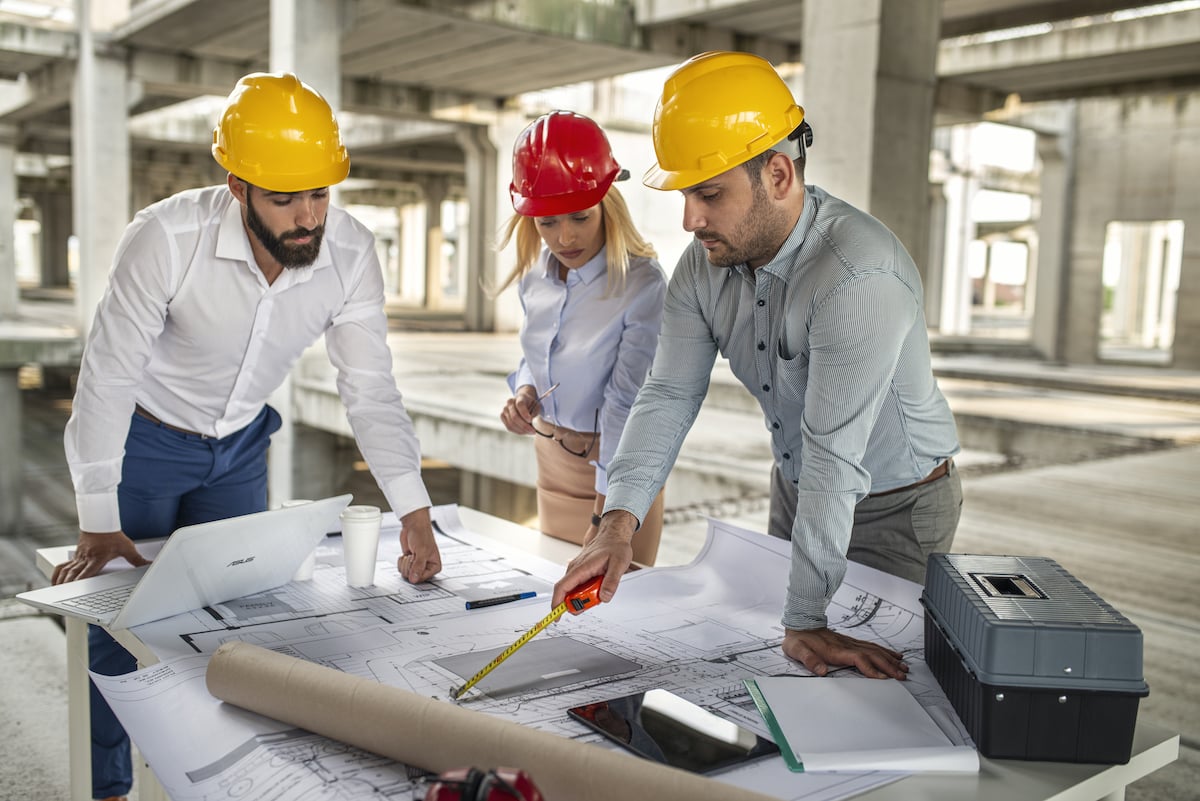Architect Insights on Balancing Form and Function
Architect Insights on Balancing Form and Function
Blog Article
The Function of Sustainability and Modern Technology in Modern Architect Practices
Sustainability and innovation are improving modern design in methods you might not anticipate. By embracing environmentally friendly products and clever advancements, architects are not just developing buildings; they're crafting settings that improve our top quality of life. This shift isn't practically aesthetic appeals or capability; it has to do with developing a liable method to our world's future. What's driving this makeover, and exactly how can these adjustments effect your area?
The Relevance of Lasting Architecture
Sustainable architecture is crucial not just for the atmosphere yet also for improving our lifestyle. You're not simply decreasing your carbon footprint; you're producing spaces that advertise health and well-being when you accept sustainable style. Visualize living in a home that utilizes natural light, enhances air top quality, and lowers power costs. You'll feel more connected and comfy to nature.
Furthermore, sustainable architecture frequently results in stronger communities. When structures are made with green techniques, they can motivate others to comply with fit, fostering a culture of sustainability. You'll notice raised home values and a greater feeling of satisfaction in your surroundings.
Lastly, by focusing on sustainability, you're buying the future. You're guaranteeing that future generations enjoy a much healthier earth and lively communities. When you consider your next job, believe about exactly how lasting design can elevate your life and those around you.
Cutting-edge Products Transforming Structure Practices
As you check out innovative products in architecture, you'll locate that naturally degradable construction products are reshaping just how we believe concerning sustainability. Recycled material developments are offering new life to waste, while clever material technologies boost building performance. These developments not just promote eco-friendliness however additionally push the borders of design.
Naturally Degradable Building And Construction Materials
While traditional construction materials commonly add to environmental destruction, biodegradable building products are becoming a feasible choice that changes structure practices. You can check out alternatives like mycelium, hempcrete, and bamboo, which not only decrease waste however likewise promote sustainability. These materials break down naturally at the end of their lifecycle, minimizing landfill contributions. By integrating eco-friendly options into your designs, you're not just improving visual allure; you're additionally making a favorable effect on the planet. Plus, they typically need much less power to generate, better decreasing your task's carbon impact. As you adjust to these cutting-edge products, you'll locate that they offer resilience and adaptability, enabling you to produce structures that align with modern values of sustainability and responsibility.
Recycled Material Developments
Over the last few years, cutting-edge materials with high recycled content have actually reinvented building techniques, providing architects interesting new alternatives - Architect. You can now incorporate products like recycled steel, which not only minimizes waste but additionally boasts remarkable stamina. Recycled glass is another superb option, giving aesthetic allure while reducing ecological effect

Smart Material Technologies
Smart product technologies are improving the method you think of constructing practices, using vibrant services that adjust to transforming conditions. These ingenious products, such as self-healing concrete and thermochromic glass, boost building performance and sustainability. When harmed-- these advancements are no longer just ideas, envision frameworks that can readjust to temperature level changes or repair themselves. By integrating wise materials, you can develop energy-efficient layouts that react to their environment, decreasing general energy usage. The capability to adjust and keep an eye on in real-time streamlines upkeep and extends the life-span of structures. As you accept these modern technologies, you're not simply introducing; you're adding to a much more sustainable future in design, merging functionality with environmental responsibility.
The Integration of Smart Technologies in Layout
As innovation develops, integrating clever options into building style becomes essential for developing effective and sustainable rooms. You can integrate smart modern technologies like developing management systems, which maximize energy usage and improve occupant convenience. Sensors can check environmental problems, changing lights and temperature instantly based on real-time information. This versatility not just enhances customer experience however also reduces energy consumption.
Integrating Net of Things (IoT) gadgets permits for smooth communication among different structure systems, enabling you to make data-driven decisions that improve capability. Smart products that react to environmental modifications can better enhance your design, supplying vibrant remedies to ever-changing conditions.
Energy Effectiveness and Renewable Resource Solutions
While several architects focus on appearances, prioritizing energy efficiency and renewable resource options is crucial for lasting design. You can start by incorporating passive solar design, which optimizes natural light and heat, minimizing dependence on man-made lights and home heating systems. Make use of high-performance insulation and energy-efficient home windows to decrease power loss.
Do not forget renewable resource systems-- mount photovoltaic panels or wind generators to produce clean energy on-site. You can also consider incorporating geothermal heating and cooling down systems for an extra lasting temperature policy.
By selecting energy-efficient appliances and lighting, you'll not just lower power usage but also reduced functional expenses for building occupants.
Including these concepts into your designs not just profits the environment but additionally improves the building's allure and worth. Eventually, your commitment to power effectiveness and renewable resource will certainly set your tasks apart in an open market.
Water Conservation Strategies in Modern Style
Integrating water conservation approaches into modern style is necessary for producing sustainable buildings that lessen environmental influence. You can accomplish this by integrating rain harvesting systems, which gather and store rainfall for irrigation and non-potable usages. Executing low-flow components and smart watering systems also lowers water consumption, making certain effective use throughout the building.
Take into consideration using drought-resistant landscape design, which requires much less water and advertises biodiversity. Incorporating absorptive paving materials enables rain to infiltrate the ground, minimizing drainage and find here charging groundwater products.
Additionally, setting up greywater recycling systems can repurpose water from sinks and showers for commode flushing or watering, further conserving resources.
The Effect of Biophilic Layout on Health
Biophilic design brings nature indoors, and you'll discover its favorable impacts on your wellness and joy. By enhancing indoor air quality and linking you with natural environments, these areas can transform your everyday experience. Allow's check out just how incorporating these attributes can enhance your overall well-being.
Nature's Influence on Health
When you integrate elements of nature right into your surroundings, it can substantially improve your mental and physical health. Biophilic design, which stresses natural light, plants, and natural materials, cultivates a sense of link to the outdoors. Embracing biophilic layout is an action towards a healthier lifestyle.
Enhancing Indoor Air High Quality
While several individuals concentrate on aesthetics and functionality in design, improving indoor air quality plays a necessary function in your total well-being. Poor air top quality can result in health and wellness issues like migraines, exhaustion, and respiratory issues. By including biophilic design aspects, you can boost air quality naturally. Plants, for example, not just beautify your area however additionally filter toxins and enhance oxygen degrees. Making use of materials with low unstable natural substances (VOCs) further contributes to a healthier indoor atmosphere. In addition, optimizing all-natural air flow helps in reducing indoor contaminants. Focusing on these elements in your layout will certainly not just boost your room but also promote a sense of calm and well-being. Ultimately, a focus on air quality is important for a sustainable and healthy and balanced living setting.
Link With Natural Environments
When you connect with natural environments in your area, you not only boost its visual charm but additionally substantially improve your wellness. Biophilic design urges you to integrate features like plants, all-natural light, and natural materials. These elements develop a soothing atmosphere, lowering anxiety and stress and anxiety. Research reveals that being around nature can improve your state of mind and cognitive feature, helping you really feel much more efficient and concentrated. When you invite the outdoors inside, you could discover far better air high quality and increased convenience. Simple modifications, like adding a living wall or huge windows, can greatly impact your experience (Architect). Inevitably, integrating nature right into your setting leads you to a healthier, better lifestyle, promoting a much deeper connection to the globe around you.
Future Trends in Sustainable Building Practices
As the globe faces pressing environmental difficulties, engineers are increasingly embracing ingenious techniques to sustainability that redefine just how we layout and build. You'll see a surge in biophilic design, integrating nature into metropolitan areas to boost health and reduce energy consumption. Smart innovations, like AI and IoT, are enhancing power monitoring in structures, maximizing source usage, and decreasing waste.
Moreover, modular building and construction is obtaining grip, enabling much faster, extra reliable structure procedures while lowering ecological effect. Making use of sustainable materials, such as recovered wood and recycled metals, is becoming basic practice. As you explore these trends, anticipate a change toward circular design, stressing the lifecycle of products and advertising reuse and recycling.
These forward-thinking techniques not only address ecological problems yet likewise create healthier, extra resistant neighborhoods. By staying educated concerning these patterns, you can help go to my blog form a lasting future in architecture.
Frequently Asked Inquiries
Exactly How Can Sustainability Affect Project Prices and Budget Plans?
Sustainability can substantially affect task expenses and budgets. You could discover that initial financial investments in green products or technologies bring about lasting savings via energy performance, minimized waste, and potential government incentives, eventually balancing the overall expenses.
What Certifications Exist for Lasting Design?
You'll find a number of certifications for lasting design, including LEED, BREEAM, and the Living Building Obstacle. These certifications assist you show your dedication to sustainability and can enhance your project's credibility and interest customers.
Exactly How Does Local Society Impact Lasting Style?
Neighborhood society forms sustainable style by showing community materials, customs, and values. You'll find that incorporating regional looks and practices not only appreciates heritage however additionally enhances the functionality and acceptance of your architectural jobs.
What Duty Does Customer Education And Learning Play in Lasting Practices?
Customer education's vital for promoting lasting techniques. When you educate customers about advantages, costs, and environmental impacts, you equip them to make educated decisions, cultivating a joint strategy that improves the job's total sustainability.

How Can Architects Determine the Success of Sustainability Campaigns?
You can gauge the success of sustainability initiatives by tracking energy consumption, evaluating product performance, and event feedback from clients. Regular audits and contrasts against helpful site benchmarks will aid you refine your approaches and display renovations properly.
By integrating smart materials, you can produce energy-efficient styles that react to their environment, lowering total energy consumption.While numerous designers focus on appearances, focusing on power performance and renewable power solutions is important for sustainable design. Biophilic design, which emphasizes natural light, plants, and organic products, cultivates a feeling of link to the outdoors. Biophilic layout urges you to integrate functions like plants, natural light, and organic materials. As you explore these fads, anticipate a change towards circular design, emphasizing the lifecycle of products and advertising reuse and recycling.
Report this page